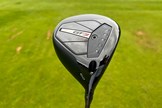Power and precision: The Titleist GT3 Driver Review
Last updated:
-
At a glance
- TG Rating
- Owner Rating
-
Pros
- The ultimate driver in adjustability
- Ball speed retention off-center hits is noticeably better than TSR3
- The best-looking driver on the market
-
Cons
- GT2 is better for total forgiveness
What we say...
The Titleist GT driver series has more consistency than ever before but is the GT3 the best option for ultimate adjustability and fine-tuning on the market?
When the TSR series released, it was met with a deserved fanfare. Offering multiple different models, all built for purpose, there weren’t many golfers that couldn’t find a driver in the line that worked for them.
Even within the TSR family, TSR3 stood out. With adjustability available to every aspect of the driver, this was truly a tinkerer’s best friend, offering changes to shafts, loft, lie angle, weight, even weight placement within the heads. Maybe the only letdown to the TSR3 was the forgiveness in the head. When it was fit properly there, wasn’t much that competed alongside this driver but without the correct setup, there was a noticeable drop-off from off-center hits.
With the GT3, Titleist is stating that they now offer a product with the industry-leading adjustability as before, but now with more help on your mishits than ever before. As a golfer who played TSR3, I was more than interested to get this new model into my hands and really put that to its test.
Break the mold
The first thing to note with the GT series, in general, is this represents a major shift in Titleist’s design theory. For the last few generations, as other manufacturers have moved into carbon-fiber-based drivers even ones where the face is made from the in-vogue material, the company has steadfastly stuck to a titanium construction in its Metalwoods category.
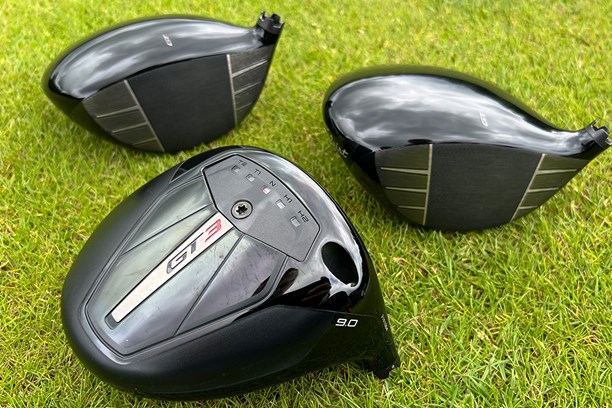
The argument was fairly sound. When you use carbon-fiber crowns, you do save weight from the material change, but that weight-saving is negated, so Titleist says, by the epoxy required to glue the composite pieces together therefore not gaining anything in total.
With GT, Titleist has, for all intents and purposes, gone against their own thinking by introducing the new PMP material used in the new Thermoform crown. So what has made the difference in this new innovation from the R&D team that could justify the change of mind within the Acushnet brand?
Thermoforming is a process wherein a plastic (or carbon fiber in this case) is bent into shape, typically shapes with more complex geometry, using a high temperature to ‘relax’ the material around a mold.
This is a key aspect for GT, as it means the crown doesn’t just sit on top of the rest of the body, but wraps around the edges and connects to the sole. This reshaped crown has allowed Titleist to move the epoxy that joins the two down to the underside of the head, helping to keep weight and center of gravity lower which promotes easier launch and lower spin.
This has massive upsides on its own for Titleist drivers, let alone when you combine it with new PMP. Proprietary Matrix Polymer is a new creation from the engineers in Carlsbad, California. This product will be used exclusively in Titleist clubs and offers the weight reduction commonly associated with carbon-fiber construction.
PMP is not just for weight-saving though.
Dial in your distance
Best for Adjustability
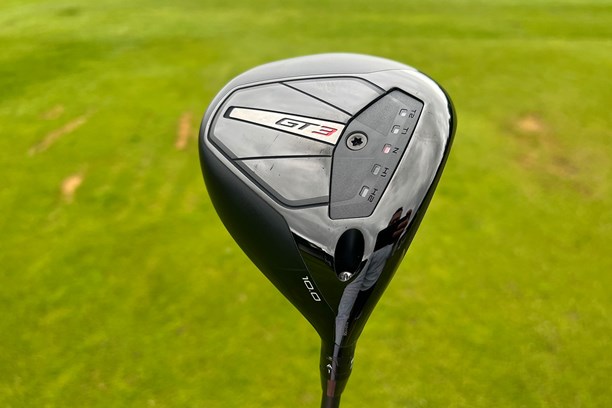

Pros
- The ultimate driver in adjustability
- Ball speed retention off-center hits is noticeably better than TSR3
- The best-looking driver on the market
Cons
- GT2 is better for total forgiveness
| Lofts: | 8º / 9º / 10º / 11º (RH/LH) |
| Shafts: | Project X Denali Red, Mitsubishi Tensei 1K Blue, Project X HZRDUS Black 5th Gen, Mitsubishi Tensei 1K Black + Premium Upcharge Graphite Design Tour AD-VF, Tour AD-DI, and Tour AD-UB |
| Grip: | Titleist Universal 360 Grip |
| Weight Options: | 4g / 6g / 8g (Standard) / 10g / 12g / 14g |
- Proprietary Matrix Polymer material
- Thermoform Process Crown
- Split Mass Internal Technology
- Improved Aerodynamics
- Enhanced SpeedRing VFT
- Tour-Inspired Graphics
Metal works
The woods that Titleist produces have a distinct sound. This is often associated with the use of metals in the driver design and there was a premium put on any changes to materials used by the golfers that play the equipment. Yes, you can change the design, but please don’t change the sound and feel.
This is an opinion that Titleist shared, and with the new polymer this made the requests possible.
There’s a familiarity when you hit GT3 but also something more. It sounds more powerful but is still distinctively metallic. Titleist provided a rectangle of the new technology, asking me to flick it with a fingernail and even throw it around the studio we were testing in. They are correct in that you could not tell whether this was classic titanium, exactly as designed. Within a few more shots, it became business as usual in my feedback from the driver. This is encouraging for those players who find the modern driver to sound ‘dead’ or duller off the face.
At impact, then, there’s nothing different to feel. Behind the face at impact is a different story though. With the TSR you had two face technologies available – Multi-Plateau VFT in the TSR2 and 4, and SpeedRing in the TSR3.
With the 2, 3, and GT4, Titleist has reengineered its two distinct versions into one consistent offering across all three heads. SpeedRing VFT (Variable Face Technology) provides a reinforced titanium Speed Ring that maximizes ball speed from the center, while the VFT part of the equation balances this out by protecting speeds on shots hit from across the face.
This is a dream scenario for Titleist, allowing them to push ball speeds consistently further forward while also still retaining the sound and feel that Titleist players expect when they invest in the latest series.
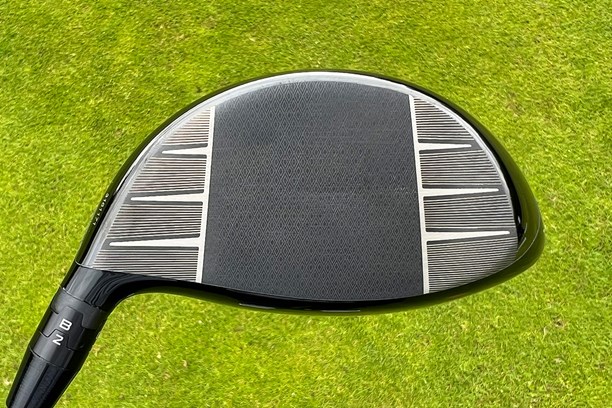
Weight for the right moment
Despite these advances, the key piece of feedback that I’d emphasize from my time with GT3 is that it still offers what made TSR3 so good.
I am a gearhead by nature. I enjoy messing with my equipment, in a search for the unicorn setup that I cannot mishit. While that pursuit may not be one that will ever produce a permanent answer, that doesn’t stop the GT3 from being the best option on the market to attempt that chase with.
GT3 adjustability starts with Titleist’s impressive collection of shaft options, both free of charge as well as additional cost models, and extends into the Surefit adaptor. Surefit, while initially slightly overwhelming with its combination of letters and numbers, offers 16 different loft and lie positions to suit your needs.
However, my personal favorite aspect of GT3 is still the same as TSR3. The CG track that runs along the sole of the driver has five set positions that you can place weight behind. There’s a small indicator slot to let you know where the weight currently is (a visual improvement over the small overhanging color marker from TSR3, in my opinion), and you can still have different weights fitted to your GT3 to dial in your driver to what you need out of your game.
With weights available from the 8g standard option to 14g (+6g over standard) and as low as 4g (-4g from standard), GT3 now offers Titleist’s full fitting suite with a below-the-surface technological upgrade that makes one of the company’s historically harder to play models much more open to play by every standard of golfer.
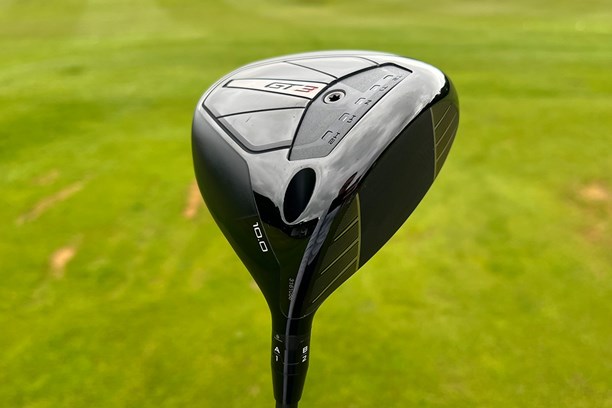
On the course
GT3 was the driver model that came out as best for me from my time at Titleist’s Performance Fitting Centre at Woburn in the UK and, as such, this is the model I’ve had the most time with on the golf course itself.
If you read my review of the Titleist GT2, you’ll note that if asked to decide to take one of the heads out with me, I was inclined to pick the GT2 for the help it offered. We decided on GT3 during the fitting because of the adjustability and now, two weeks into my time with this driver, I’m glad I was convinced otherwise.
For what seems like the first time in my life, I haven’t touched the settings of a golf club in my bag. The trust I’m able to put into GT3 is still incredible to me, even as I write this. Shots I’ve been certain shouldn’t work, from the feedback off the head, have left the face barely moving off-line from where was intended.
That’s not to say the GT3 is bulletproof. You still need to put a reasonable swing together to maximize your efforts and, while there is more help on shots hit heel and toe than previous generations, I still don’t think GT3 is a driver for the wild striker of the ball.
With that in mind, I’d still jump at the chance to recommend GT3. There is impressive consistency in key numbers such as ball speed, spin, and launch, whether the impact is centered or (relatively) off-center. This still represents the market leader in adjustability, and with the innovation that Titleist has brought to the table, the GT3 looks set to be the most complete driver that the company has ever produced.
About the author

Lewis Daff
Lewis Daff joined the Today’s Golfer digital team in 2024, having spent more than a decade in both big box golf retail and independent stores, working as a club fitter and builder.
Experienced with every level of golfer, from beginner to professional, he has achieved Master Fitter and Builder status with most major manufacturers, including Mizuno, Taylormade, and Callaway, helping him to cement both a wide and deep knowledge base. Lewis specializes in Clubs, Shafts, Training Aids, Launch Monitors and Grips.
In Lewis’ bag is Titleist GT3 Driver (9º) with Fujikura Ventus Black, Titleist GT2 Fairway Wood (15º), Wilson Staff D9 Forged 3-iron, Srixon ZX7 MKii Irons (4-PW), Titleist SM9 Wedges (52º, 60º), Toulon San Diego Putter, and Callaway Chrome Tour Ball.
Talk to Lewis about why steel shafts are now dead and graphite is the only way forward or any other equipment you’d like to debate via his email.
Product Information
Titleist GT3 Driver
RRP: $649.00 / £579.00 + $849.00 / £749.00 (Premium)
Lofts: 8° / 9° / 10° / 11º (RH/LH)
Head Size: 460cc
Lie: 58.5°
Standard Shaft Length: 45.5”
Stock Shaft Options: Project X Denali Red / Mitsubishi Tensei 1K Blue / Project X HZRDUS Black 5th Gen / Mitsubishi Tensei 1K Black
Premium Upcharge Shafts: Graphite Design Tour AD-VF / Tour AD-DI / Tour AD-UB
Stock Grip: Titleist Universal 360 Grip


